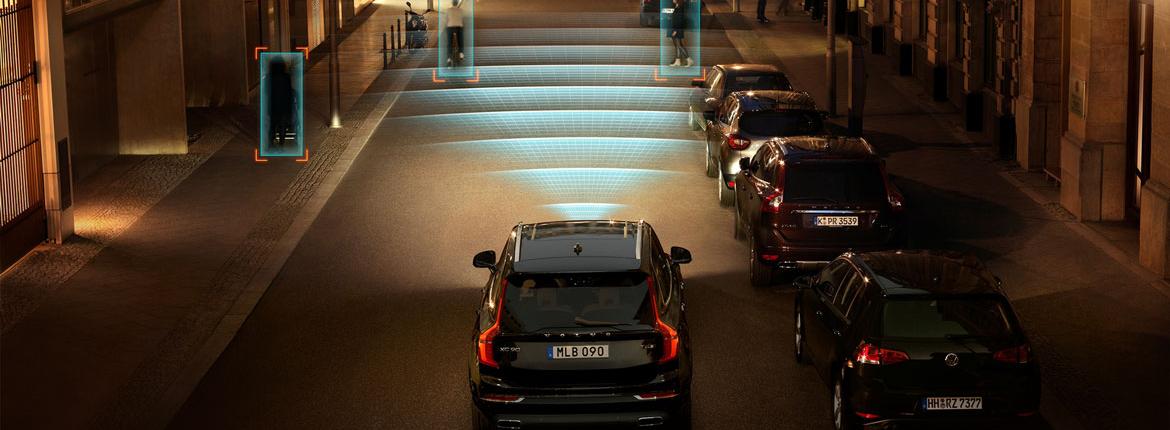Recent news on crash statistics in New Zealand should provide fresh impetus to put safety high on your list of ‘must-haves’ when buying a new or used car. And not just active safety ‒ stuff like ABS brakes and stability control, to help avoid crashes — but also features that will increase your chance of walking away unharmed.
The best of these features initially arrive in luxury vehicles, and it’s easy to brush them off as pie-in-the-sky for the mainstream market. But look more closely at a few of those common brands and models and you’ll find that safety equipment, even features that once required a fortune to acquire, has trickled down to more affordable cars. The bigger the benefit, the more rapid its arrival as an option for the average new-car buyer and then, as night follows day, for the used-car buyer, too.
The latest eyebrow-raiser will arrive with the New Mercedes S-class coupe and convertible later this year. You can take it as read that in terms of luxury and comfort this car is loaded; the driver can even scroll through 64 different cabin lighting hues. But what drew my attention are two new goodies that could well be in a Nissan near you, and soon.
The first is an extension to the auto cruise control which modifies car speed to a chosen limit, slowing automatically if you catch up to another car, and weighting the steering around gentle bends. That same system also uses cameras and GPS to read the road ahead. Speed bumps coming up? The system will automatically prime the suspension to cushion your ride. Roundabout or curve? Where once your cruise control would have kept you at the same speed until you touched the brakes, these cars will now automatically slow to an appropriate speed, weight the steering to the correct direction, then accelerate out.
Mercedes-Benz pitches this as a safety feature; if you’re distracted – arguing with your spouse, shouting at the kids – you’ll notice the car slow and start paying attention.
The same model will also mark the New Zealand debut of a system that will protect your hearing in a crash. Announced back in 2015 and first sold in the E-class in 2016, Pre-Safe Sound triggers a protective physical reflex milliseconds before a collision occurs.
Your eight-year-old used import already has clever sensors to measure an imminent impact and its force in order to trigger the airbags. But the subsequent crash as metal impacts solid objects, glass breaks and airbags expand too fast for the human eye to measure makes a heck of a lot of noise ‒ enough to make your ears ring for some time.
But not in the S-class. If all the car’s integral crash prevention aids have not already kept that impact at bay, the sensors take just 150 milliseconds to pre-tension the seatbelts and trigger the sound system to fire off a short interference signal. Your reflexes instantly contract the stapedius muscle in your ear, which alters the connection between eardrum and inner ear for just long enough to protect it from the massive pressure wave from the impact.
But if your car has auto emergency braking, you may never need to protect your ears. Introduced by Volvo across all its cars in 2008 and now common to many brands, the system works best at around-town speeds. Sensors read that you’re at risk of imminent impact and, if you don’t touch the brakes or turn the wheel, the car automatically slams on the anchors.
In Sweden alone, insurance claims for rear-enders dropped by 28% in the years following the introduction of automatic emergency braking. In the UK, city-speed rear-enders have dropped so markedly that cars fitted with it attract cheaper insurance premiums.
The brand’s XC90 has been hailed the UK’s safest car; in the 16 years it’s been on sale, no-one has been killed in one, despite the fact 50,000 have been sold.
Nowadays, your everyday Mazda may have this tech, too. The brand introduced it in 2014. Even the $21,945 GLX Mazda2 includes it, along with Blind Spot Alert in more highly spec’d models.
Cars which weight the steering to keep you in lane are now common, too. I first experienced it on a Japanese test track in a Honda Legend in 2005. By 2014 the same model could sense an imminent pedestrian collision and automatically steer away from it.
Lane Keep Assist technology is mainstream, as are a plethora of warning devices to alert you to possible obstacles and multiple devices to protect you during a crash. Ford now fits rear seatbelts with integrated airbags to its Mondeo range, as well as the new Endura S-Line.
If you’re buying a new or used car solely on price, you may have missed just how much a modern car can deliver to keep you safe. This is especially important for older drivers, whose bodies are less resilient, and for new drivers. Whatever your age, you’re more likely to crash during your restricted license period than any other time.
Next time you buy, think of setting yourself a bottom line in safety terms. Not just ABS, ESP and airbags, but items like auto emergency braking, too. After all, that traffic jam rear-ender can happen all too easily and whiplash is never fun, let alone more serious injuries.
Volvo’s stated aim is to reach the point where no one ever dies on the road in a Volvo. Soon, all cars will be in a race to reach that goal.
Reported by Jacqui Madelin for our AA Directions Winter 2018 issue




